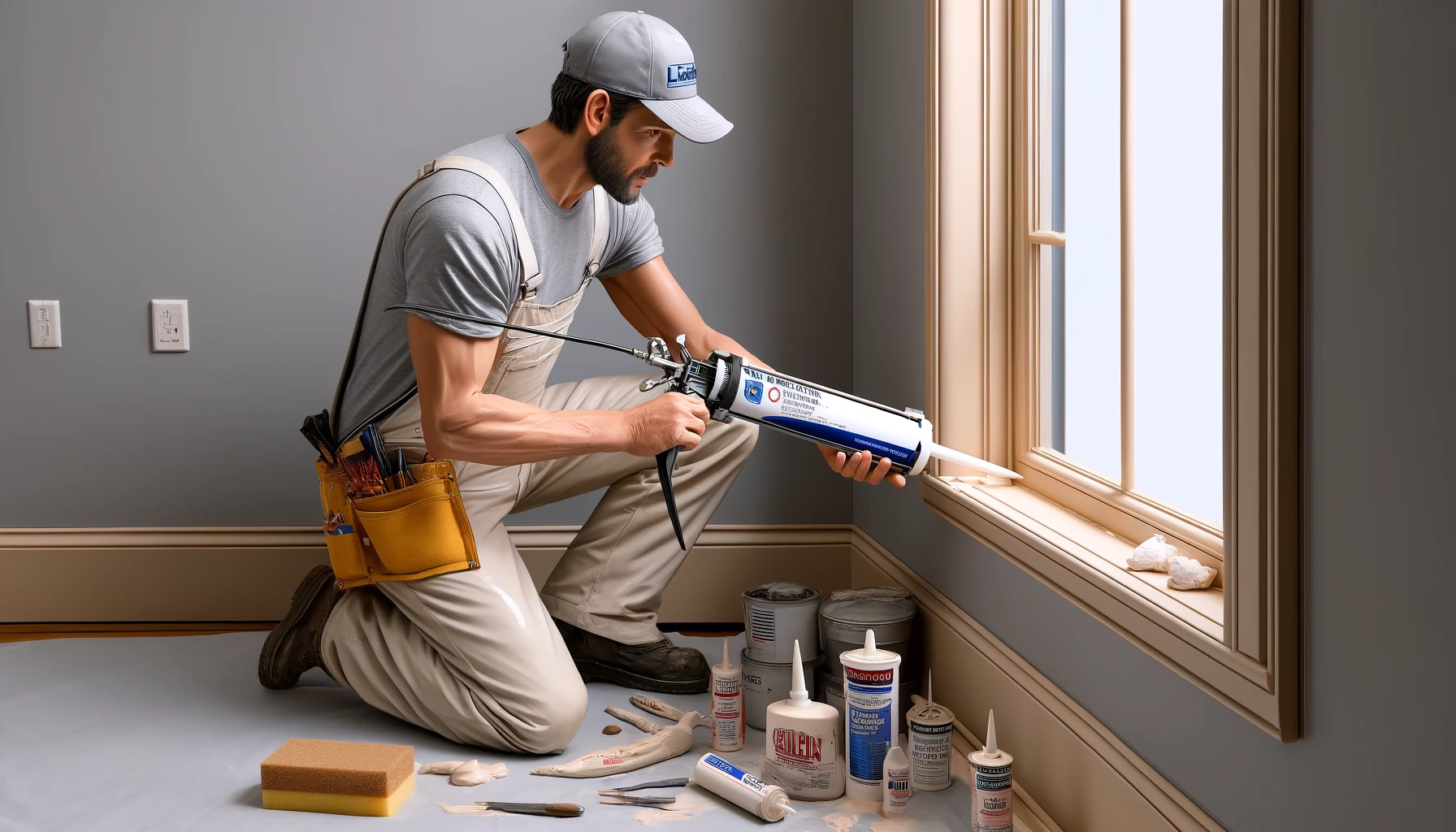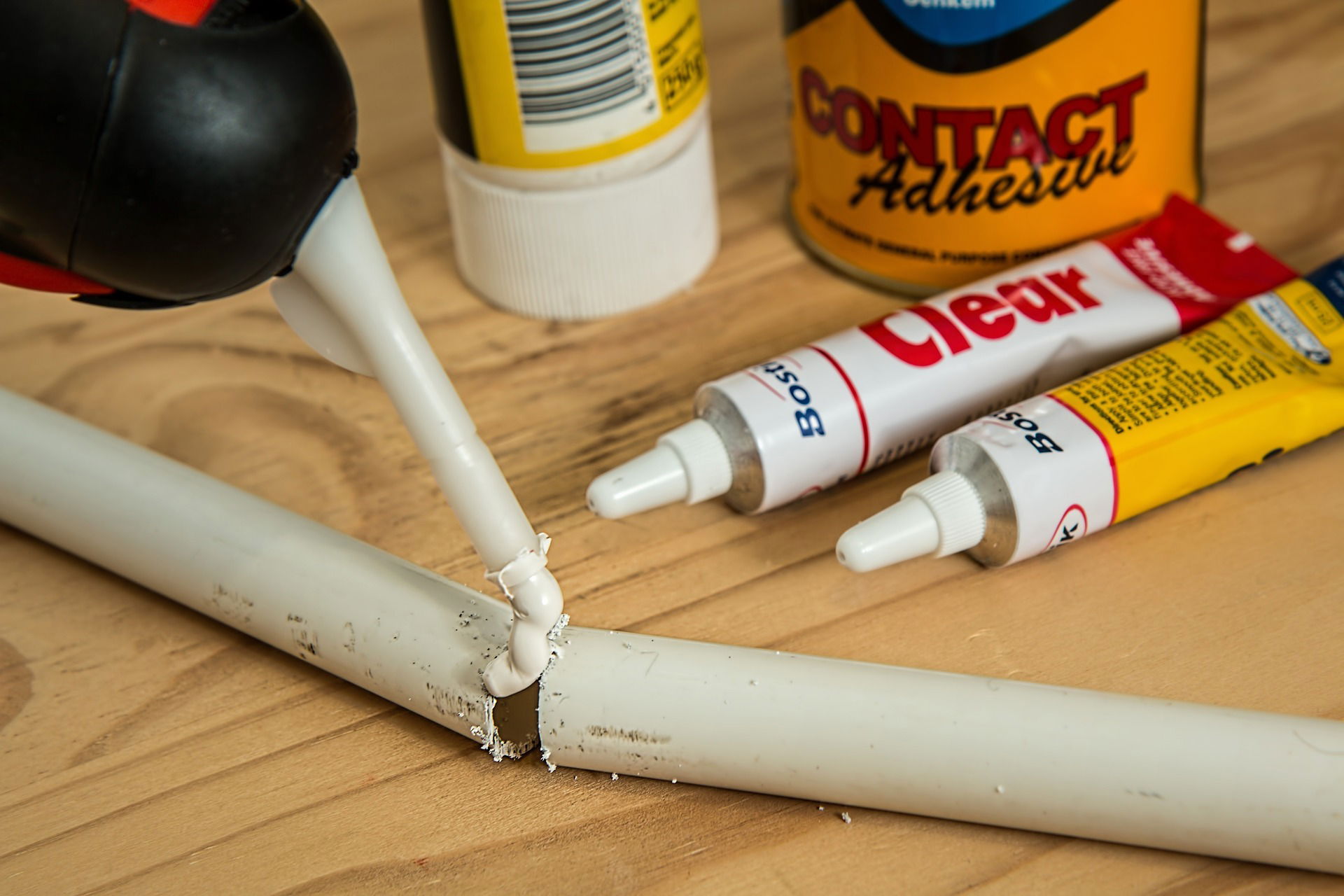Sealing the Deal: The Art of Caulking and Sealing in Painting

Key Features:
- Integral to Paint Longevity and Protection:
- Caulking and sealing act as essential barriers against moisture and air leaks, crucial for protecting the building structure and ensuring the paint adheres properly and lasts longer.
- They play a significant role in maintaining the structural integrity and visual appeal, acting as a bridge between aesthetics and durability.
- Aesthetic Enhancement and Functional Benefits:
- These processes not only protect surfaces but also improve the overall appearance by smoothing transitions and filling gaps or cracks, contributing to a refined and finished look.
- They aid in insulation, enhancing a building’s thermal efficiency by reducing heat loss or gain and increasing moisture resistance, offering a dual function of beautifying and safeguarding the structure.
- Technique and Material Selection:
- Selecting the right caulk and sealant type for the specific application, considering factors like water resistance, paintability, and compatibility with the environment.
- The art of application is crucial, with techniques such as cutting the caulk tube at the appropriate angle and using the right tools for smoothing to ensure a clean line and effective adhesion.
"I am the silent protector of walls and windows. What am I?"
Answer below
Caulking and Sealing in Painting
Hello, home improvement enthusiasts and DIY dynamos! Welcome to another edition of Lightmen Daily, where today we’re exploring the often-overlooked yet utterly essential world of caulking and sealing. In the hands of Lightmen Painting, these aren't just mundane tasks; they're the final, crucial steps that transform a good paint job into a great one. So, let’s delve into the nitty-gritty of caulking and sealing and why these steps are indispensable for that flawless finish we all crave.
Caulking and Sealing: More Than Meets the Eye
The Unsung Heroes of Painting
Caulking and sealing are the unsung heroes of painting, often overlooked but vital for the longevity and beauty of the paintwork. They play a pivotal role in battling against the elements like moisture and air leaks, ensuring that the paint adheres better and lasts longer. These processes are essential in maintaining the structural integrity and visual appeal of a building, effectively acting as the glue that binds aesthetics with durability.
Aesthetic Appeal Meets Functionality
While primarily protective, caulking and sealing also enhance the visual appeal of painted surfaces. They act as a finisher, refining the appearance of the paint job by smoothing transitions and filling unsightly gaps or cracks. Their role in improving a building's insulation, by reducing heat loss or gain, and enhancing moisture resistance, underscores their dual function of beautifying and protecting.
In Our Experience:
"Caulking and sealing are the heroes in painting, essential for both the look and protective aspects of a paint job. Attention to detail is the key, this will ensure every project you handle is executed flawlessly. Our experience has taught us the value of choosing the right materials and applying them with properly, protecting buildings against moisture and air leaks, and enhancing overall appearance. We focus on both the technical and aesthetic details We offer tailored solutions to meet each home's unique needs, ensuring the longevity and beauty of our work and your home. "
Mastering Caulking Basics
Choosing the Right Caulk
Selecting the appropriate caulk type is crucial for effective caulking. Silicone caulk is renowned for its water resistance and durability, making it ideal for wet areas like kitchens and bathrooms. Acrylic and latex caulks are more suited for dry areas and are paintable, allowing for a seamless blend with the surrounding painted surfaces.
The Art of Application
Proper application technique is crucial for a seamless and durable caulking job. The angle at which the caulk tube is cut and the tool used for smoothing the caulk can significantly affect the finish. Proper technique not only ensures a clean line and finish but also enhances the caulk's longevity by ensuring full contact and adhesion to the surface.
Sealing the Deal
Understanding Sealing Techniques
Sealing is about creating an impermeable barrier that enhances the painted surface's integrity. It involves choosing the right sealant for the specific material and environmental conditions, ensuring compatibility and durability. Techniques vary depending on the surface and the sealant type, with some requiring a primer to ensure optimal adherence.
Precision Is Key
The effectiveness of sealing lies in the precision of the application. A consistent, even layer of sealant is necessary to effectively block moisture and drafts. Using tools like painter's tape to create clean, straight edges can significantly enhance the appearance and effectiveness of the seal, ensuring that the protective and aesthetic functions of caulking and sealing are fully realized.
Common Challenges in Caulking and Sealing
"I used so much caulk in my house, even the cracks started to seal their fate!"
Dealing with Uneven Surfaces
Tackling uneven surfaces is a nuanced aspect of caulking and sealing, requiring a methodical approach to ensure the fillers adhere properly and maintain the structural and aesthetic integrity of the surface. It involves assessing the extent of the unevenness, choosing the appropriate caulk or sealant with the right elasticity and filling properties, and applying it in a way that contours to the surface irregularities without creating bulges or gaps.
Matching Caulk with Paint
The visual integration of caulk with the surrounding paintwork is vital for a professional finish. Lightmen Painting specializes in selecting and applying caulk that not only performs well under various conditions but also matches the paint color, ensuring that the caulked areas blend seamlessly with the painted surfaces. This attention to detail helps maintain the aesthetic continuity of the space.
Tips and Tricks for DIY Caulking and Sealing
Practice Makes Perfect
DIY enthusiasts are encouraged to practice caulking and sealing in less visible areas to refine their technique. This practice can lead to improved application skills, making it easier to tackle more prominent areas with confidence, ensuring a neater, more professional-looking finish when it really counts.
Clean and Prep the Surface
A clean surface is vital for successful caulking and sealing, ensuring strong adhesion and a smooth finish. Proper surface preparation is the foundation of effective caulking and sealing. A clean, dry, and dust-free surface ensures that the caulk or sealant adheres properly and lasts longer. This step cannot be overstated and is key to achieving a professional-looking job that stands the test of time.
The Lightmen Painting Edge
Expertise and Precision
Lightmen Painting distinguishes itself with a team of skilled professionals who bring precision and expertise to every job. Their meticulous approach ensures that caulking and sealing are executed flawlessly, focusing on both the functional and aesthetic aspects to deliver superior results.
Tailored Solutions for Every Home
Recognizing the uniqueness of each home, Lightmen Painting provides customized caulking and sealing services designed to meet the specific requirements and challenges of each project. This tailored approach ensures that every solution is as effective and aesthetically pleasing as possible.
Detail in Painting
Caulking and sealing are the final touches that distinguish a superior paint job. Through the expertise of Lightmen Painting, these processes are elevated to an art form, ensuring your home not only looks splendid but is also protected and preserved. Remember, in the world of home improvement, it's the details that make all the difference!Caulking and sealing, the silent protectors of your home, complete the story of your painting project, providing a fitting and durable end to the transformation journey.
-
People Also Ask:
Why is caulking and sealing important in painting projects?
Caulking and sealing are crucial in painting projects because they protect against moisture and air leaks, ensuring the paint adheres properly and lasts longer. These processes also improve the overall appearance by smoothing transitions and filling gaps or cracks, thereby enhancing the aesthetic and functional integrity of the structure.
How do you select the right caulk or sealant for a project?
Selecting the right caulk or sealant depends on the project's specific requirements, including the material surfaces involved, exposure to weather conditions, and the need for paintability or flexibility. Silicone caulk is ideal for wet areas due to its waterproof properties, while acrylic or latex caulks are better suited for paintable surfaces and dry areas.
What are some best practices for applying caulk and sealant?
Best practices for applying caulk and sealant include:
Preparing the surface by cleaning it thoroughly to ensure good adhesion.
Cutting the caulk tube tip at the right angle for the desired bead size.
Applying caulk or sealant smoothly and evenly, using a caulk gun and smoothing tool for a clean finish.
-
SUBSCRIBE TO OUR BLOG: Stay informed with the latest in Painting and DIY projects by subscribing to Lightmen Painting. Get insights, tips, and more delivered straight to your inbox. We would also love to know what you would like to read about, leave thoughts on where we should go next. Interests, Topics, Ideas, all are welcome.
"Caulking and sealing are like the final words in a story – they neatly wrap up all the chapters before them."
Answer: Caulk/Sealant
If your in the Portland, Or. area and need advice or a free no obligation estimate call us at 503-389-5758 or email scheduling@lightmenpainting.com
Shout Out
Great Guys Movers - Trustworthy Moving Services
Great Guys Movers connects you to reliable movers across the country. Lightmen Painting appreciates their commitment to making relocations smooth and hassle-free. Find your moving solution at Great Guys Movers.
Thanks for stopping by Lightmen Daily! Stay tuned for more practical tips and expert advice on making your painting projects flawless, from wall to floor!
Definitions
- Caulking and Sealing: The processes of applying a filler material to close gaps, cracks, or joints in various surfaces, which is essential for both protecting the structure and enhancing the appearance of a paint job.
- Moisture and Air Leaks: Caulking and sealing act as barriers to prevent moisture infiltration and air leaks, which can damage building materials and affect energy efficiency.
- Aesthetic Enhancement: Improving the visual appeal of painted surfaces by filling gaps and smoothing transitions, creating a refined and finished look.
- Insulation and Thermal Efficiency: Caulking and sealing contribute to a building’s thermal efficiency by reducing heat loss or gain, thus improving insulation.
- Silicone Caulk: A durable and water-resistant caulk ideal for wet areas like kitchens and bathrooms.
- Acrylic/Latex Caulk: Paintable caulks suitable for dry areas, allowing for a seamless blend with the surrounding painted surfaces.
- Application Technique: The method used to apply caulk or sealant, including cutting the tube tip at the right angle and using the appropriate tools to smooth the material, ensuring a clean and effective seal.
- Structural Integrity: The ability of a building to maintain its stability and strength, which caulking and sealing help protect by preventing moisture and air infiltration.
- Paint Longevity: The duration for which paint remains intact and maintains its appearance, enhanced by proper caulking and sealing.
- Visual Integration: The process of matching caulk with the surrounding paint to ensure that filled gaps and cracks blend seamlessly with the painted surfaces.
- Surface Preparation: Cleaning and preparing the surface before applying caulk or sealant to ensure strong adhesion and a smooth finish.
- Tailored Solutions: Customized caulking and sealing services designed to meet the specific needs and challenges of each project.
- Expertise and Precision: The skill and meticulous approach brought by professional painters to ensure flawless execution of caulking and sealing, focusing on both functional and aesthetic aspects.
- DIY Tips: Recommendations for do-it-yourself enthusiasts to practice caulking and sealing in less visible areas, ensuring improved technique and a more professional finish in prominent areas.
- Common Challenges: Issues faced during caulking and sealing, such as dealing with uneven surfaces and ensuring the proper match between caulk and paint.
- Sealing Techniques: Methods used to create an impermeable barrier that enhances the painted surface's integrity, including choosing the right sealant and applying it with precision.
- Painter's Tape: A tool used to create clean, straight edges during the application of caulk or sealant, enhancing both the appearance and effectiveness of the seal.
- Professional Painter: A skilled individual or team with expertise in painting, caulking, and sealing, capable of delivering high-quality, durable, and aesthetically pleasing results.
Lightmen Painting Serving: Portland, Tigard, Lake Oswego, Tualatin, West Linn, Milwaukie, Sherwood, Happy Valley, Oregon City, Beaverton, Hillsboro, Gresham


